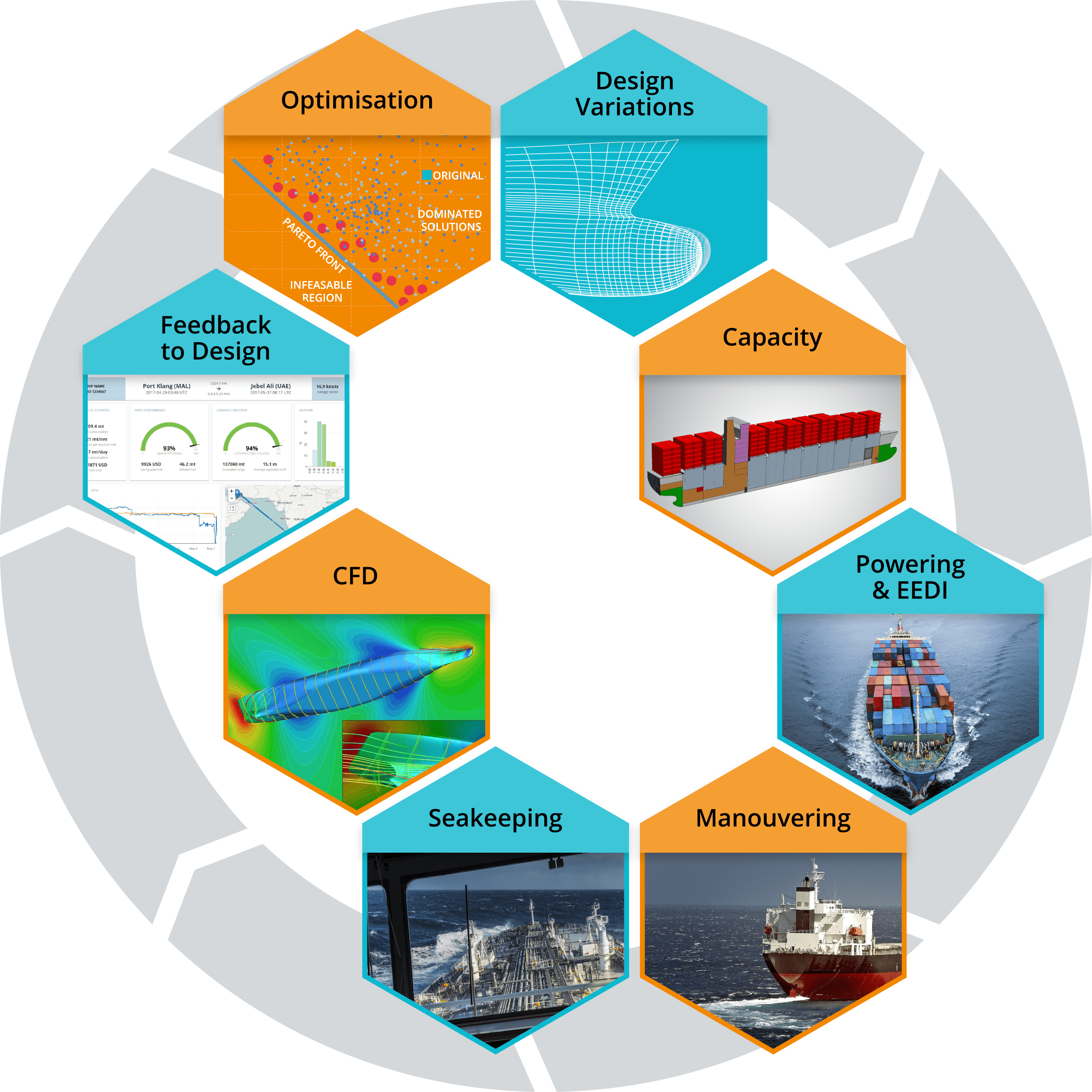November 23, 2019
NAPA integrates hydrodynamics into the initial ship design for greener shipping
NAPA streamlines the design process by integrating the hydrodynamic analysis.
NAPA is best known for its comprehensive set of tools for flexible 3D modeling and ship stability analysis. What is less widely appreciated is that NAPA also has efficient tools for hydrodynamics analysis to support the process of hull form design.

To deliver cleaner and greener shipping, shipping must reduce its GHG emissions dramatically, and in the coming decades phase them out entirely.
However, the optimization potential of ship design in calm waters has been almost fully realized. To continue making progress it is now necessary to consider the actual operation profile and the environmental conditions in which it operates.
For shipbuilders and ship designers, this will probably require as yet undiscovered innovations as well as the use of new technologies.
As part of this evolution, it will also be necessary to more efficiently manage the entire ship design spiral, including all the relevant disciplines, including the maneuverability and seakeeping characteristics. To achieve these ambitions, an integrated solution is needed.
How can NAPA help ship designers?
NAPA is best known for its comprehensive set of tools for flexible 3D modeling and ship stability analysis. What is less widely appreciated is that NAPA also has efficient tools for hydrodynamics analysis to support the process of hull form design.
NAPA includes state-of-the-art hull form modelling tools that are now being transformed. This updated toolset comprises efficient interactive hull surface modelling tools, quick and intuitive hull transformation capabilities, and as before, the entire workflow can be scripted.
The core strength this provides is the integration it delivers. By providing a more efficient way of working and better designs there is no longer any need to switch between software. NAPA has also automated design variation support with optimization algorithms, and the relevant hydrodynamic analysis can be included in the loop, as well as through external CFD.
NAPA Hydrodynamic subsystems enable quick powering predictions, propeller design and optimization, EEDI compliance check, ensuring maneuverability, and seakeeping characteristics, including elements such as the wave-added resistance.
NAPA Fleet Intelligence provides the access to operational ship data including the weather conditions. This enables the optimization of the ship for the actual conditions on the planned sea areas.
NAPA Hydrodynamic subsystems include:
NAPA Resistance & Propulsion comprises the most common statistical methods for resistance and propulsion and powering predictions with the capability to apply corrections based on the reference project library. High-quality user experience is ensured via an easy-to-use Manager application, which also integrates propeller design and optimization, as well as EEDI compliance checks and many other features.
NAPA Seakeeping enables the design of safe and eco-efficient hull forms for real sea conditions. By applying the Strip method or the 3D Panel method for the response analysis in regular or irregular waves, the user can, for example, minimize the risk of losing or damaging cargo, ensure passenger comfort, analyze the wave-added resistance of the design, and calculate hydrodynamic pressures for structure analyses with FEM.
NAPA Maneuvering ensures the steering ability of the design. The relevant maneuvering devices and environmental forces can be taken into consideration within the four degrees of freedom maneuvering simulations such as turning circle, station-keeping, or any other simulation required for a wheelhouse poster or maneuvering booklet.
For more information, see:
https://www.napa.fi/software-and-services/ship-design/hull-form-design-and-hydrodynamics